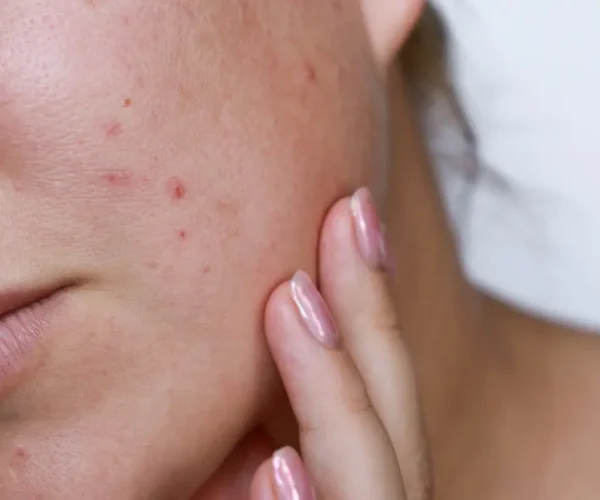Recovering well after acne scar procedures—whether microneedling, laser resurfacing, chemical peels, or PRP—depends as much on your at-home care as the in-clinic treatment. This guide gives a practical, day-by-day, product-friendly, and dermatologist-minded plan so you get a fast acne scar recovery and long-lasting improvement. It answers the key questions: What is the best skincare routine after acne scar treatment? How to speed up healing after acne scar treatment? What products to use after acne scar treatment? And can I use moisturizer after acne scar treatment?
Quick overview: Why a post-treatment skincare routine matters
Proper skincare after a procedure reduces complications (infection, prolonged redness, post-inflammatory hyperpigmentation) and supports the skin’s natural repair processes so results appear sooner and last longer. Important steps include gentle cleansing, targeted topical care, sun protection, and avoiding irritants until the skin barrier is restored. Follow your clinician’s instructions closely—most dermatology societies recommend customized aftercare and staged re-introduction of actives.
Core principles for a fast acne scar recovery
1) Protect the skin barrier
Immediately after treatment your skin barrier is compromised. Use only non-irritating, fragrance-free, and pH-balanced products for the first 3–14 days depending on the treatment intensity. Avoid harsh physical exfoliants, retinoids, benzoyl peroxide, and strong acids until your clinician clears you. This protects fragile healing tissue and prevents further inflammation—critical for a fast acne scar recovery.
2) Prioritize sun protection
Sunscreen is essential after any resurfacing or needling procedure because UV exposure increases the risk of darkening scars and prolongs healing. Use a broad-spectrum SPF 30–50 (reapply every 2 hours when outdoors) and physical barriers (hat, shade) where possible. Daily sunscreen helps ensure improvements from in-office treatments are not undone by sun-induced pigment changes.
3) Support controlled healing
Some treatments intentionally create micro-injuries to stimulate new collagen. You want a clean, moist, and protected environment for those micro-injuries to remodel into smoother skin. Occlusive ointments (petrolatum-based or medical-grade healing ointments) for the first 24–72 hours can speed re-epithelialization and reduce scabbing, followed by gentle emollients and barrier repair formulations.
Step-by-step skincare routine after acne scar treatment (general template)
The exact timeline depends on treatment (laser resurfacing, microneedling, chemical peel, PRP, etc.). Below is a general, clinician-friendly routine you can adapt and discuss with your provider.
Immediate aftercare — Day 0 (the day of treatment)
Do:
– Follow clinic instructions verbatim (this is the most important single action for a fast acne scar recovery).
– Use prescribed cool compresses if recommended and gentle cleansing with sterile saline or a very mild cleanser.
– Apply the recommended healing ointment (often petroleum-based or a clinician-approved barrier balm) to keep the skin moist and protected.
Don’t:
– Don’t pick, scrub, use makeup, or apply active ingredients (retinoids, acids, benzoyl peroxide) unless your clinician says so.
Days 1–3: first phase of recovery
– Cleanse gently twice daily with a non-foaming, fragrance-free cleanser. Pat dry—do not rub.
– Continue healing ointment or switch to a barrier-repair moisturizer as advised. A thin layer of ointment helps re-epithelialization.
– Avoid sun exposure; wear broad-brim hat and physical protection.
Days 4–14: re-introducing hydration and gentle care
– If the skin is no longer weeping or raw, transition to a richer, fragrance-free moisturizer and continue sunscreen daily.
– Avoid manual exfoliation and wait to introduce topical actives until cleared by your dermatologist.
Weeks 2–8+: rebuilding and enhancing results
– Gradually reintroduce targeted ingredients (under clinician guidance): low-strength topical retinoids, niacinamide, vitamin C serums, and gentle AHA products—introduced one at a time and spaced weeks apart.
– Consider adjuvant therapies (topical growth factors or silicone gel for raised scars) if recommended. For atrophic (indented) scars, in-office enhancements like fillers or additional needling sessions may be scheduled as advised.
What products to use after acne scar treatment?
Below are product categories and examples; always choose non-comedogenic, fragrance-free formulas and check with your clinician before starting any new product after treatment.
1. Gentle cleansers
Look for very mild, soap-free, low-foaming cleansers labeled for sensitive or post-procedure skin. Cleanse twice daily or as recommended.
2. Healing ointments (first 24–72 hours)
Simple occlusives—petrolatum (Vaseline) or clinician-recommended healing balm—help keep micro-injuries moist and reduce scabbing. These are commonly prescribed immediately post-procedure.
3. Barrier repair moisturizers
After the initial healing phase, use ceramide-rich, fragrance-free moisturizers to rebuild the skin barrier. These support the natural healing process and lessen dryness and irritation.
4. Sunscreen (daily, essential)
Broad-spectrum SPF 30–50 mineral or chemical sunscreens should be applied as soon as the skin can tolerate topical products (and used consistently thereafter). Sunscreen is one of the most impactful tools for a fast acne scar recovery because it prevents darkening of scars and protects delicate new skin.
5. Later-stage actives (only after clinician approval)
– Short-contact retinoids or low-concentration retinol (introduced slowly).
– Niacinamide (helps tone down redness and supports barrier recovery).
– Vitamin C (antioxidant and brightening effect, helps with post-inflammatory hyperpigmentation).
– Mild AHAs (glycolic or lactic acid) to improve surface texture—but wait until the skin barrier is restored.
How to speed up healing after acne scar treatment: evidence-based tips
Several practical steps can speed healing and reduce complications:

Follow clinician aftercare
Following your provider’s instructions (including wound care, medication, and activity restrictions) is the top factor in achieving a fast acne scar recovery. Clinic-specific protocols vary by device and depth of treatment.
Use occlusion early
Keeping the treated area lightly occluded with a petrolatum-based ointment for the first 24–72 hours can speed re-epithelialization and reduce crusting or scarring.
Don’t skip sunscreen
Sun avoidance and diligent sunscreen use are critical to prevent pigmentary complications that can make scars more noticeable and slow perceived recovery.
Consider adjuncts when appropriate (clinical evidence)
Some combined approaches—like adding platelet-rich plasma (PRP) to microneedling or lasers—have shown promise in improving outcomes for atrophic (indented) acne scars, although systematic reviews note variable strength of evidence and call for more high-quality trials. Discuss these options with your provider if you want to optimize healing and results.
Sample 8-week timeline for common treatments
Microneedling (fractional needling)
Days 0–3: mild redness and pinpoint bleeding—use healing ointment and gentle cleansers.
Days 4–14: switch to barrier moisturizer and sunscreen; no active exfoliants.
Weeks 3–8: slowly reintroduce retinoids or vitamin C if tolerated; consider repeat session at 6–8 weeks if recommended.
Fractional laser resurfacing
Days 0–7: pronounced redness/swelling and crusting; very gentle cleansing and occlusion per clinic instructions.
Weeks 2–4: transition to moisturizer and sunscreen; skin tone will gradually normalize—full remodeling can take months.
Chemical peels (medium depth)
Days 0–7: peeling and dryness—moisturize frequently with barrier products.
Weeks 2–8: skin continues to improve as collagen remodels; sunscreen is essential to avoid pigmentary changes.
FAQ — answer the exact keyword questions
What is the best skincare routine after acne scar treatment?
The best skincare routine after acne scar treatment focuses on (1) gentle cleansing, (2) early occlusion with a healing ointment, (3) barrier repair moisturizers, and (4) consistent high-SPF sun protection. Re-introduce active ingredients (retinoids, AHAs, vitamin C) only when your provider clears you. Following this sequence encourages a fast acne scar recovery and reduces the risk of complications.
How to speed up healing after acne scar treatment?
Speed healing by following clinic aftercare, keeping the wound clean and moist (short-term occlusion), avoiding sun exposure, and using barrier-repair moisturizers. Consider adjuncts like PRP in combination with needling or lasers if your clinician recommends them—evidence shows potential benefit but is still evolving.
What products to use after acne scar treatment?
Use a gentle cleanser, a petrolatum-based healing ointment (first 1–3 days), a ceramide-rich barrier moisturizer thereafter, and a broad-spectrum SPF 30–50 daily. Later, reintroduce targeted agents like niacinamide, vitamin C, or low-strength retinoids only after healing and with your dermatologist’s approval.
Can I use moisturizer after acne scar treatment?
Yes—moisturizer is an essential part of recovery. In the immediate hours after treatment many clinicians recommend an occlusive ointment (petrolatum) to keep the skin moist. After the initial 24–72 hours, switch to a gentle, fragrance-free moisturizer to rebuild the skin barrier. Moisturizer helps comfort, reduces tightness, and supports faster healing.
Special considerations by scar type and treatment
Atrophic (depressed) scars
Procedures such as microneedling, fractional lasers, and combinations (e.g., microneedling + PRP) are commonly used. Aftercare emphasizes barrier support, sunscreen, and staged introduction of actives to maximize collagen remodeling. Evidence suggests combination approaches may yield better outcomes, though higher-quality studies are still needed.
Hypertrophic or keloid scars
These often need different treatments (steroid injections, silicone sheeting, laser). Aftercare focuses on minimizing tension and using silicone or prescribed topicals to soften raised scars—always under clinician supervision.
Common mistakes that slow healing
– Using strong actives (retinoids, exfoliating acids, benzoyl peroxide) too early.
– Skipping sunscreen and exposing fragile skin to UV.
– Picking or peeling scabs (increases risk of scarring and pigment changes).
– Not following clinician instructions for wound care and medication.
When to contact your clinician
Contact your provider if you notice signs of infection (increasing pain, pus, spreading redness, fever), persistent or worsening discoloration, or if you have concerns about delayed healing. Early communication helps prevent small problems from becoming major setbacks in your fast acne scar recovery.
Clinic option: professional acne scar treatments at Parpar
If you’re looking for in-clinic options that combine advanced procedures with evidence-based aftercare, Parpar offers targeted acne scar treatments and post-procedure follow-up to optimize healing and outcome. Learn more about our acne scar services here: Parpar Acne Scars Treatment.
Evidence & recommended reading
Selected references that informed this guide (helpful for deeper reading):
- American Academy of Dermatology — patient aftercare guidance for acne scars.
- Mayo Clinic — overview of acne scars and treatment/recovery recommendations.
- Systematic reviews and PubMed articles on PRP and combined therapies for acne scarring (reviews showing promise but calling for higher-quality studies).
Practical checklist — First 2 weeks (printable)
– Follow clinic instructions exactly.
– Cleanse gently twice daily.
– Use healing ointment for first 24–72 hours.
– Switch to barrier moisturizer when instructed.
– Apply broad-spectrum SPF 30–50 daily and reapply when outdoors.
– Avoid makeup, retinoids, and exfoliants until cleared.
– Keep follow-up appointment(s) and report signs of infection.
Bottom line: what speeds recovery and maximizes results?
A combination of careful wound care, barrier repair, sun protection, and following your dermatologist’s instructions is the fastest, safest way to get a fast acne scar recovery. Where appropriate, evidence-based adjuncts such as PRP combined with microneedling or laser may improve outcomes—but these should be discussed with your clinician so aftercare is tailored to the chosen procedure.
Call to action
Ready to discuss a personalized post-treatment plan or schedule a consultation? Visit our acne scar services page at Parpar Acne Scars Treatment or book an appointment with our specialists to design a safe, effective plan for fast acne scar recovery.

